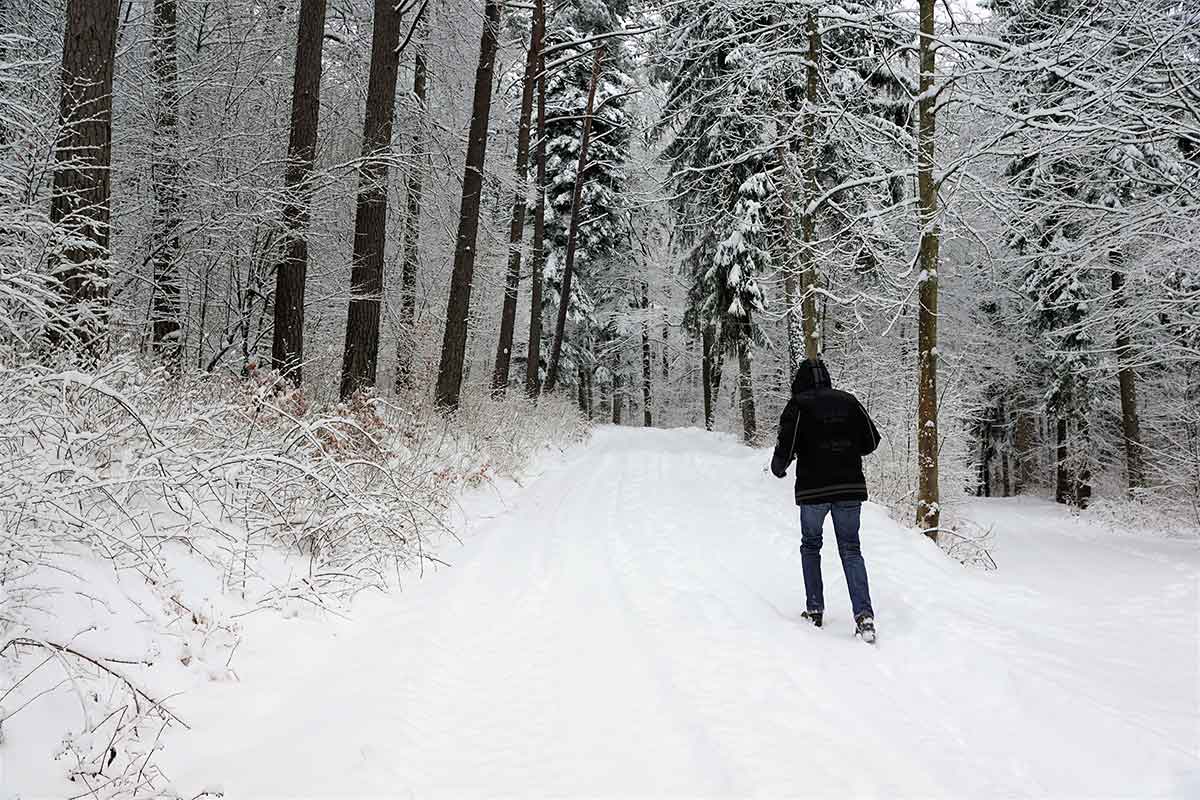
Layering properly, no matter the activity, is key to being warm and comfortable outdoors in winter.
Photo: Pixabay
You probably know Dagwood from the Blondie cartoon strip.
Now there’s a man who knows about layering.
At least when it comes to sandwiches, that is. He’s famous for monster-sized creations that involve stack upon stack upon stack.
Anyone who ventures outside at this time of year – especially in the face of brutally cold temperatures like those we’ve endured recently – needs to take that lesson to heart when it comes to clothing. Whether you’re hiking, snowshoeing, cross country skiing, hunting, or otherwise exploring the winter fields and forests, layering is key.
You don’t have to go to Dagwood-like extremes necessarily.
But it is vitally important to wear layers of clothes, of the right kinds, in the right order.
Basically, think in threes, at a minimum. You need a base layer, a middle layer and an outer layer. Each serves a different purpose, and therefore requires a different kind of clothing.
Base layers are all about moisture wicking. They contribute to warmth as much by carrying sweat away from your skin as anything.
Think polyesters, nylons and other synthetics here. And, whatever you do, avoid cotton. It loses its ability to keep you warm as soon as it gets wet (no wonder those old white long johns never seemed to work, right)?
Long underwear of this type comes in various weights: lightweight, midwewight and heavyweight. Pick something appropriate for what you’ll be doing. If you will be constantly moving, for example, lighter long underwear might be best, whereas if you’ll be sitting for longer periods of time, something heavier is better.
Your middle, or second, layer is where you focus on insulation. You want something that traps air next to the body.
Insulating layers are often made of fleece, synthetic fill, wool or down.
The latter of the four offers more warmth per weight than anything else, and compacts down the best, if that’s a consideration. But down also largely loses its ability to insulate when it gets wet.
Wool is the old standard, if sometimes a bit heavy, while fleece is often the most breathable, but also the most susceptible to wind.
The third, or outer, layer serves primarily to keep you dry. It protects you from rain and snow, not to mention wind.
Be aware, though, of degree.
Some outer shells – both jackets and pants — are billed as waterproof and breathable. Most expensive on the scale, they’re meant to keep all water out while still allowing moisture from body heat to escape.
Less pricey, but also less suitable for the nastiest weather, are shells breathable but “water resistant.” As that implies, they’re good for a lot of situations. But aren’t going to keep you bone dry if a real squall kicks up.
At the bottom of the list, in terms of price and adaptability, are waterproof but non-breathable shells. They’ll indeed keep you dry – but only from the outside, and only so long as you do a lot of sitting.
But be too active in them and you’ll sweat and get soaked from the inside.
Of course, these three layers are a minimum. You can add more as needed. When it’s really cold, or when you might be sitting in a blind or otherwise still for long periods, putting on additional insulating shirts, pants and pairs of underwear can really help a lot.
You don’t necessarily have to wear all those extra layers at once either. Carry some in a pack. Then, add or subtract clothing based on your activity level.
And you need to care for your extremities.
Cover your feet in layers, too, starting with a pair of wicking socks and topping those with wool ones. A hat, neck gaiter or buff, leg gaiters to keep snow from getting inside your pants legs and gloves are all important, as well. It’s no fun when your body is warm but your fingers are freezing.
Dress appropriately, though, and exploring the outdoors can be just as much fun in winter as in any other season.
Other tips for staying warm beyond layering
There are some other things you can do, in addition to dressing appropriately, to stay warm when exploring the outdoors in winter.
- Start your day with a hearty breakfast and carry snacks while you’re out. Your body burns fat-rich foods – chocolate, cheeses and nuts – slowly, so consuming them periodically throughout the day keeps your furnace stoked.
- Drink warm liquids. You’ll perform best outdoors if you stay hydrated. Cold drinks, though, bring your body temperature down. So carry something warm and sweetened with a bit of sugar or honey.
- Carry hand warmers. Keep disposable ones or, often better, re-usable warmers in a pocket to experience heaven for cold fingers.
- Watch where you sit. Need a break on your hike or ski trip? Rest if you want, but sit on your pack, a seat warmer, an extra shirt or something. Plopping down directly on a cold, wet log or rock will drain body heat.
- Find the sun. Wildlife does it: on cold days, animals like white-tailed deer lounge on sun-soaked slopes to enjoy the couple of extra degrees of warmth. Do the same. If you stop to rest, do it in the sun rather than the shade.
Want to see more? Check us out on Facebook, Twitter and Instagram.








